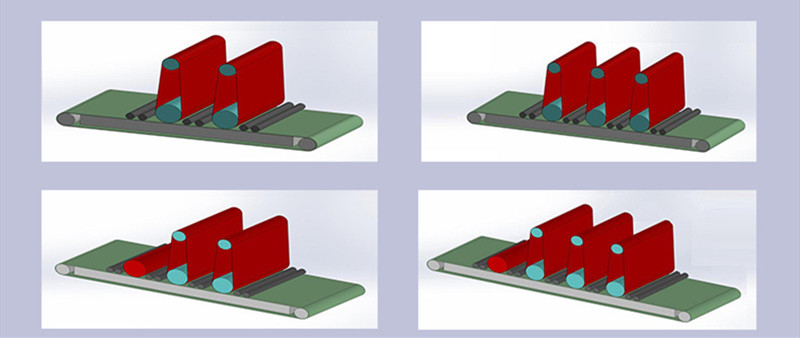Industrial Wide Belt Sander: The Backbone of Modern Metal Surface Finishing
Introduction
In modern manufacturing, surface finish is more than just a visual feature—it’s a functional necessity. In industries such as metal fabrication, aerospace, automotive, and construction, components must meet strict standards for surface quality, precision, and edge consistency. At the core of this finishing process stands one of the most vital pieces of equipment: the industrial wide belt sander.
Originally associated with woodworking, wide belt sanders have evolved to become powerful and versatile machines for processing sheet metal, metal plates, and laser-cut components. This article explores the full scope of the industrial wide belt sander—from its definition and core structure to its applications, benefits, and especially its key role in metalworking.
What Is an Industrial Wide Belt Sander?
An industrial wide belt sander is a high-capacity machine designed to process flat workpieces using wide abrasive belts. These belts, mounted on rotating drums, remove material from the surface with precision, resulting in a smooth, deburred, and uniform finish.
Unlike handheld grinders or orbital sanders, an industrial wide belt sander can process multiple parts simultaneously or large-format sheets in one pass. Its ability to maintain consistent surface quality and edge condition makes it indispensable for high-volume and high-precision industries.
Key Structural Components
Modern industrial wide belt sanders are highly engineered systems built for efficiency, durability, and performance. Below are the essential components and their roles:
1. Abrasive Belt Module
At the heart of the system is the abrasive belt, typically 600mm to 1650mm wide. It rotates at high speeds and is used for grinding, deburring, or finishing metal surfaces. Multiple belts with varying grit levels can be configured for rough or fine work.
2. Contact Drum or Pad
The abrasive belt is pressed onto the surface of the workpiece by contact drums or segmented pressure pads. The use of segmented pads allows the machine to adapt to uneven surfaces, ensuring uniform pressure and material removal.
3. Workpiece Conveyor System
The machine’s conveyor system feeds parts steadily through the sanding zone. For thin or lightweight metal parts, vacuum beds or magnetic tables are used to hold components securely during processing.
4. Brush Units (Optional)
Many industrial machines include additional brush heads for edge rounding, oxide removal, or satin finishing. These brushes may be rotary, planetary, or oscillating, depending on the desired finish.
5. Cooling or Dust Collection System
6. Control Interface
The entire operation is managed via a digital control panel (HMI). Operators can adjust settings such as feed rate, belt speed, contact pressure, and processing thickness. Advanced models support CNC control, recipe storage, and remote diagnostics.
Applications in Metalworking
Industrial wide belt sanders are specifically optimized for metalworking applications. These include:
Deburring: Removing sharp burrs left after laser cutting, punching, or shearing.
Edge Rounding: Creating consistent R1–R2 rounded edges on internal and external contours.
Oxide Removal: Eliminating the oxide film formed during thermal cutting processes.
Surface Preparation: Prepping parts for welding, powder coating, or painting.
Surface Finishing: Producing brushed, satin, or matte finishes on stainless steel or aluminum.
They are widely used in industries such as:
Sheet metal fabrication
Appliance and enclosure manufacturing
Automotive and aerospace part production
HVAC component manufacturing
Furniture and architectural metalwork
Key Advantages of Industrial Wide Belt Sanders
✅ 1. High Consistency and Accuracy
Manual grinding introduces variation; wide belt sanders ensure that every part is processed identically with tight thickness tolerances.
✅ 2. Increased Productivity
Machines can process hundreds of parts per hour with minimal human intervention, significantly improving output.
✅ 3. Multi-functional Capabilities
With belt + brush configurations, one machine can perform grinding, edge rounding, deburring, and finishing in a single pass.
✅ 4. Worker Safety and Ergonomics
Automation reduces manual handling of sharp parts and exposure to sparks, dust, and repetitive strain injuries.
✅ 5. Cost Efficiency Over Time
Although initial investment is higher than handheld tools, the reduced labor, faster cycle times, and lower rework rates provide excellent ROI.
✅ 6. Integration with Smart Manufacturing
Modern sanders can be integrated into automated production lines and Industry 4.0 systems, supporting data logging, remote monitoring, and intelligent diagnostics.
Common Use Cases in Metal Fabrication
Here’s how industrial wide belt sanders are applied in real-world metalworking environments:
● Laser-Cut Part Finishing
After laser cutting, parts often have sharp burrs or oxide layers. A wide belt sander removes both, preparing parts for coating or welding.
● Aluminum Sheet Finishing
Aluminum sheets used in architectural or automotive industries are often brushed for aesthetic and functional purposes.
● Pre-Paint or Pre-Coat Prep
Proper edge rounding and surface preparation ensure better paint or powder coating adhesion and longer corrosion resistance.
● Post-Weld Cleaning
Sanding machines remove discoloration or weld beads after TIG/MIG welding, improving the final product's appearance.
Latest Developments in Wide Belt Sanding Technology
Industrial wide belt sanders are evolving with advancements such as:
Servo-driven pressure control
Auto-belt tracking and tensioning systems
Belt wear monitoring
Quick-change modules for tooling
Hybrid wet/dry sanding capabilities
Smart thickness calibration with lasers
These upgrades increase precision, minimize downtime, and allow flexible production across a wide range of materials and part sizes.
Conclusion
The industrial wide belt sander is no longer just a finishing machine—it’s a strategic asset for metalworking businesses that value efficiency, safety, and surface perfection. From deburring and edge rounding to fine finishing, these machines are designed to meet the rigorous demands of modern metal fabrication.
With automation-friendly features, multi-process capability, and high-volume output, investing in a quality wide belt sander pays off through improved product quality, reduced labor costs, and scalable growth potential. In today’s competitive industrial landscape, it’s a tool that no serious manufacturer can afford to overlook.










